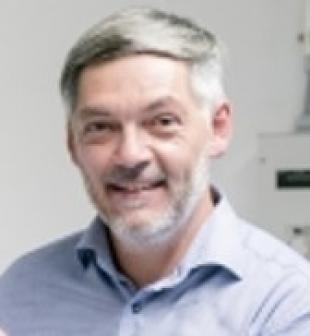Location:
Sanderson Building, LT-1
Date:
Abstract:
Within this presentation I will in a first step give an overview about the Lab’s research activities and focus in the second part on recent results of the development of biomimetic membranes used for blood propulsion devices.
Coagulation on the surfaces of blood-contacting materials is a major problem for ventricular pulsatile assist devices causing fatal complications for patients. Therefore, improved hemocompatible materials with appropriate elastic properties are urgently needed. In nature, the endothelium of blood vessels intimately regulates a range of physiological vascular functions including the prevention of thrombosis. The aim of this project is to develop a non-thrombogenic hyperelastic membrane for pulsatile blood propulsion devices inspired by nature’s design of the blood vessel structure. For this, we are exploring cytocompatible fibrous polymer networks incorporating smooth muscle cells embedded within the three dimensional structure, and endothelial cells on its surface to mimic the native blood-tissue interface. Furthermore, novel concepts to enable targeted and stable long-term adhesion of these two cell types to the polymer network are developed in the frame of this biomimetic approach.
As a first proof of concept, 3D networks made of polymeric fibers (e.g. PVDFhfp) incorporating muscle cells (C2C12 murine skeletal myoblasts) were created by a simultaneous process of polymer electrospinning and cell electrospraying, including a preliminary Gelatine cell encapsulation step by microfluidics for cell protection against toxic solvents. Live/dead staining as well as microscopic cell analysis revealed no negative effect on viability and the expression of the characteristic cell phenotype compared to control samples.
Furthermore, in contact with blood fiber diameter as well as surface topography were found to influence the early events leading to thrombus formation, i.e. platelet adhesion and formation of a fibrin network. In a next step, complex 3D structures with smooth muscle cells homogenously distributed in the polymer network and endothelial cells covering the top surface will be developed and investigated for antithrombogenic and mechanical properties.
Bio:
Since 2012 Dr. Giuseppino Fortunato is project leader, Empa, Laboratory for Biomimetic Membranes and Textiles (nanofibers, tissue engineering, drug release, medical devices). Dr. Giuseppino Fortunato holds a Dipl. Chem. by University Zurich and a PhD in Chemical by the Inorganic Institute of the University of Zurich with focus on the synthesis of micron- and nanosized catalyst particles.



